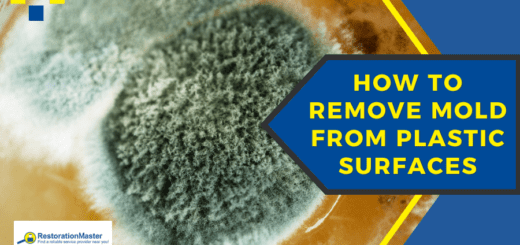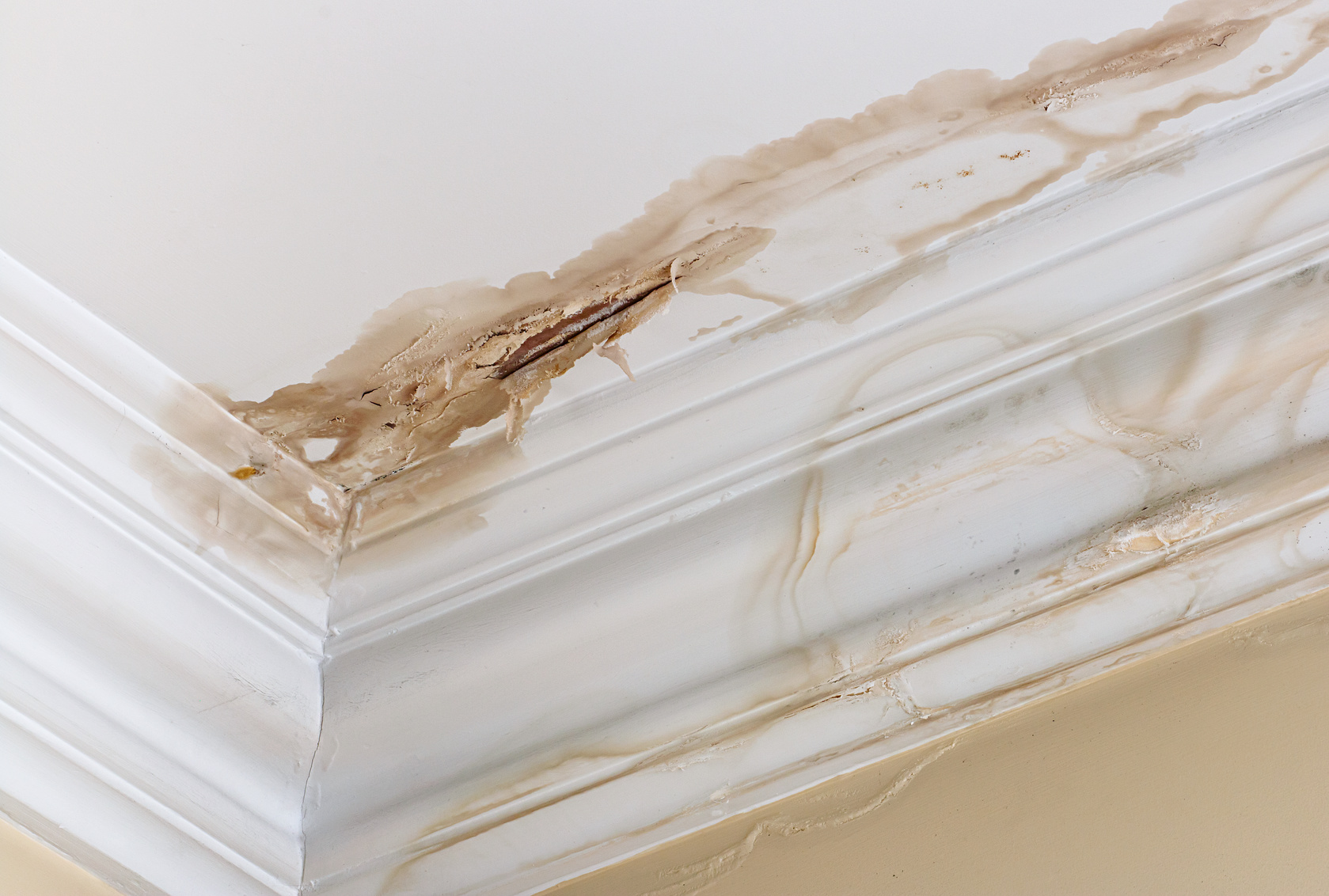Why Is There Mold in My Dishwasher?
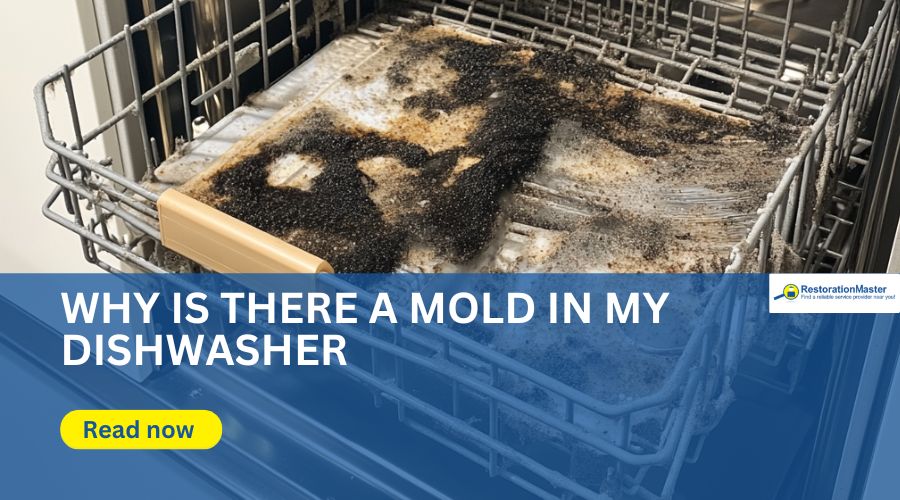
The dishwasher, cleaning dirty dishes, is a convenient household appliance. So, it’s a surprise when moldMold is a type of fungus that grows in damp or humid conditi... More grows inside. After all, the dishwasher’s task is to clean. Homeowners should be aware of all the reasons that moldMold is a type of fungus that grows in damp or humid conditi... More infestations develop inside the dishwasher and what to do about it.
What is mold?
MoldMold is a type of fungus that grows in damp or humid conditi... More is a prevalent fungus that flourishes in the great outdoors. The microscopic sporesSpores are microscopic reproductive units of fungi or mold t... More are essential for helping organic matter, like dead leaves and trees, decay. MoldMold is a type of fungus that grows in damp or humid conditi... More becomes a nuisance and even a hazard when it develops indoors along the walls, under carpets, or inside the dishwasher.
What does mold feed on?
Only three primary nutrients sustain moldMold is a type of fungus that grows in damp or humid conditi... More sporesSpores are microscopic reproductive units of fungi or mold t... More: dampness, darkness, and an organic food source. MoldMold is a type of fungus that grows in damp or humid conditi... More thrives wherever moisture is constant and abundant. The dishwasher is a perfect habitat for moldMold is a type of fungus that grows in damp or humid conditi... More growth because it provides all the food the sporesSpores are microscopic reproductive units of fungi or mold t... More need to multiply.
Why does mold grow in the dishwasher?
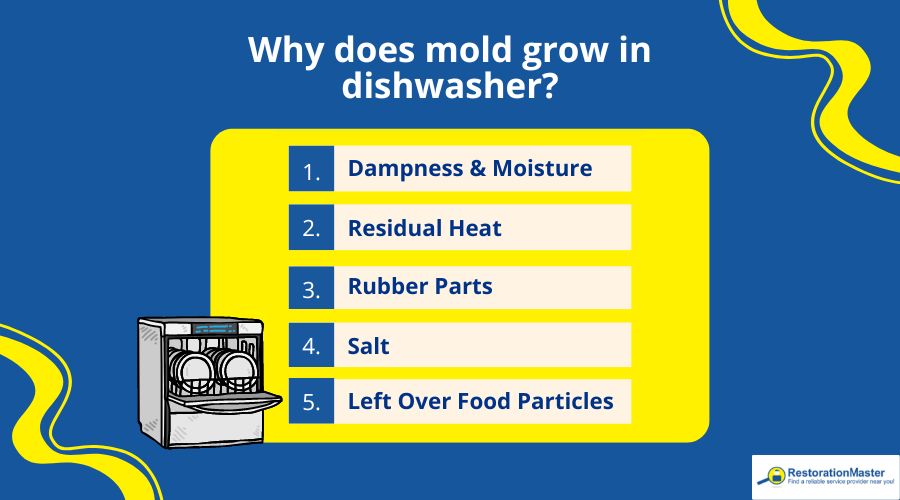
Dishwashers are typically moist places—which is the reason moldMold is a type of fungus that grows in damp or humid conditi... More grows here. The lack of adequate air circulation makes it a habitable area for the tiny sporesSpores are microscopic reproductive units of fungi or mold t... More. They feed on organic materialsOrganic materials are derived from living organisms, such as... More inside the dishwasher, such as remnants of food left on the dinner plates or utensils. Here is a detailed reason why:
- Food Particles: When you load dirty dishes into the dishwasher, leftover food can get trapped inside. These bits provide an easy food source for moldMold is a type of fungus that grows in damp or humid conditi... More.
- Moisture: Dishwashers are usually damp due to the water and steam used during cycles. This humidityHumidity is the amount of moisture or water vapor present in... More creates an ideal environment for moldMold is a type of fungus that grows in damp or humid conditi... More to thrive.
- Heat: The hot water used for washing not only cleans your dishes but also keeps the interior warm. Even after the wash cycle ends, residual heat can help moldMold is a type of fungus that grows in damp or humid conditi... More survive.
- Darkness: MoldMold is a type of fungus that grows in damp or humid conditi... More loves dark places, and the inside of a dishwasher is typically devoid of light. This darkness allows moldMold is a type of fungus that grows in damp or humid conditi... More sporesSpores are microscopic reproductive units of fungi or mold t... More to settle and multiply without disruption.
- Rubber Parts: Areas like door seals and gaskets can trap moisture and food particles, making them prime spots for moldMold is a type of fungus that grows in damp or humid conditi... More to grow.
- Salt: If you use salt for water softening in your dishwasher, it can contribute to moisture accumulation, which encourages moldMold is a type of fungus that grows in damp or humid conditi... More growth.
How do homeowners spot the mold?
Prior to inspecting the dishwasher for moldMold is a type of fungus that grows in damp or humid conditi... More, wear protective gear. Disposable gloves, an N-95 respirator, and goggles protect the homeowner and prevent respiratory problems. MoldMold is a type of fungus that grows in damp or humid conditi... More can be dangerous, especially for people who have moldMold is a type of fungus that grows in damp or humid conditi... More allergies or are sensitive to moldMold is a type of fungus that grows in damp or humid conditi... More.
MoldMold is a type of fungus that grows in damp or humid conditi... More growth may resemble a buildup of gunk, so it’s important to make sure that the growth is actually moldMold is a type of fungus that grows in damp or humid conditi... More. This step can be achieved by looking for discoloration. Slimy residueResidue is any leftover material, such as soot, dust, or che... More is another visual clue. A moldy dishwasher is likely to emit a musty odorAn odor is a smell, often detectable by the human nose, whic... More.
Food particles left in the dishwasher can attract moldMold is a type of fungus that grows in damp or humid conditi... More within a matter of days. The moldMold is a type of fungus that grows in damp or humid conditi... More colonies then become visible. Check the corners and rubber gaskets in the dishwasher for dark splotches—indications of moldMold is a type of fungus that grows in damp or humid conditi... More growth. Pull out removable parts from the appliance and check them for moldMold is a type of fungus that grows in damp or humid conditi... More, too.
A dishwasher, especially one that is frequently used, is likely to contain buildup. Grime is dirty but it is not necessarily moldMold is a type of fungus that grows in damp or humid conditi... More. Inspect the housing; if it appears black or smells musty, they are clear signs that moldMold is a type of fungus that grows in damp or humid conditi... More colonies have invaded that part of the dishwasher.
How do homeowners eliminate mold from the dishwasher?
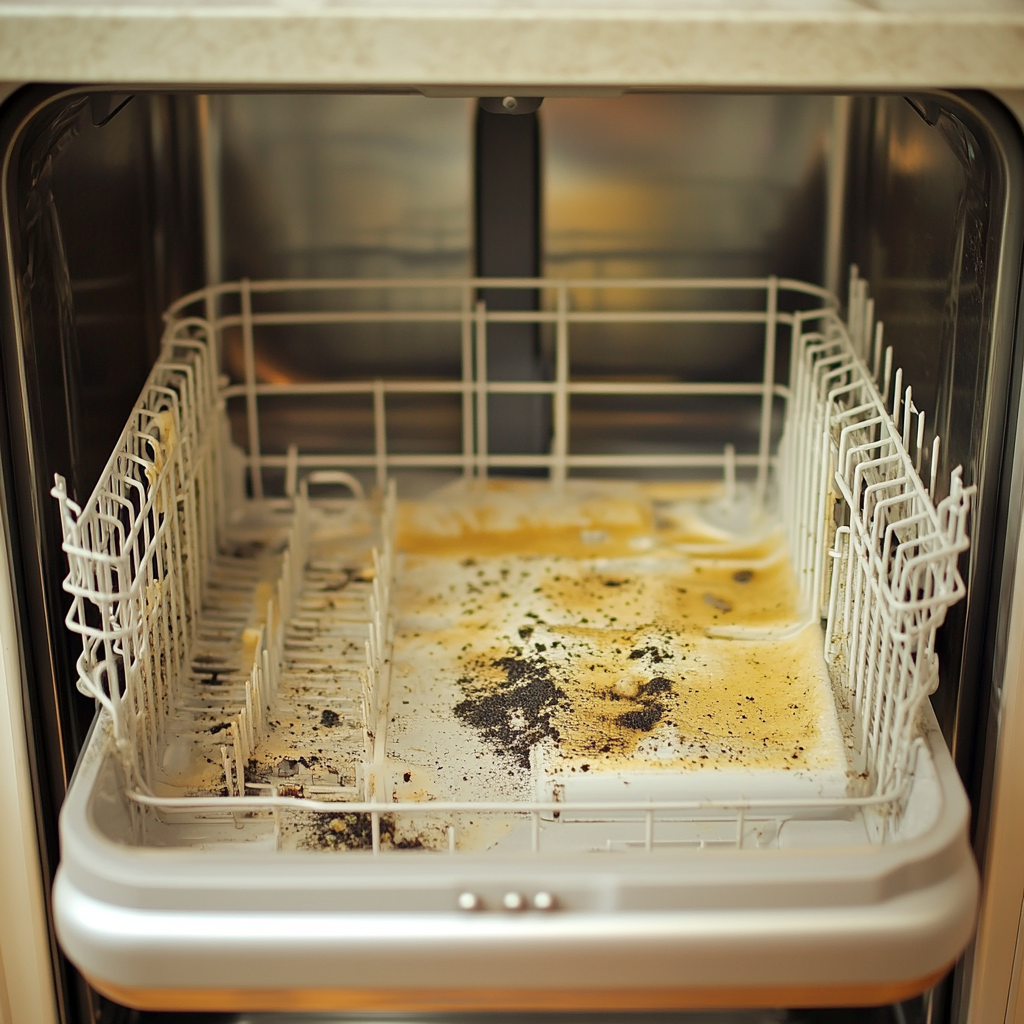
Mold growth in the dishwasher should be cleaned promptly. As mentioned, moldMold is a type of fungus that grows in damp or humid conditi... More can be harmful to sensitive individuals, triggering allergies and asthma. Other health symptoms can occur upon exposure to moldMold is a type of fungus that grows in damp or humid conditi... More, such as a runny nose, watery eyes, and a cough.
1. Assess the Mold Growth
First determine the extent of moldMold is a type of fungus that grows in damp or humid conditi... More growth. If it is a large infestation, call in professional mold remediationMold remediation is the process of identifying, removing, an... More experts. Smaller moldMold is a type of fungus that grows in damp or humid conditi... More colonies, such as those less than 10 square feet, can be cleaned up as a DIY task. However, extreme care and caution are required when cleaning mold.
2. Clean the Dishwasher
After donning personal protective equipment, take out the removable parts from the dishwasher, like the baskets and trays. Run the appliance on the hottest cycle without any items inside. Use a scrub brush to dislodge any visible moldMold is a type of fungus that grows in damp or humid conditi... More growth from surfaces and under the tabs where water collects.
3. Dry the Appliance
Once the visible moldMold is a type of fungus that grows in damp or humid conditi... More is scrubbed off, wipe the interior surfaces with a clean, damp cloth. Allow the appliance to dry completely. Remove debris from the drain opening and door seal by folding them back. Place all the parts back into the dishwasher after they are dry.
4. Disinfect the Interior
Disinfect the interior of the clean dishwasher, preferably without the use of harsh chemicals. Common household products, such as vinegar, baking soda, or lemon juice, are recommended. Bleach is also effective but optional. A commercial dishwasher cleaner can be used, as well.
Place a cup of vinegar in a dishwasher-safe container on the top rack of the otherwise empty appliance; run a normal wash cycle on the highest heat. Alternately, sprinkle a cup of baking soda on the bottom of the empty dishwasher and run a short hot water cycle.
Lemon juice works equally well. Fill a dishwasher-safe bowl with lemon juice and place it on the bottom of the rack; run a regular cycle to kill off any lingering moldMold is a type of fungus that grows in damp or humid conditi... More. Bleach cleans the dishwasher, too, but it can damage some parts; mixing it with other chemicals unleashes harsh fumes.
How is mold growth prevented?
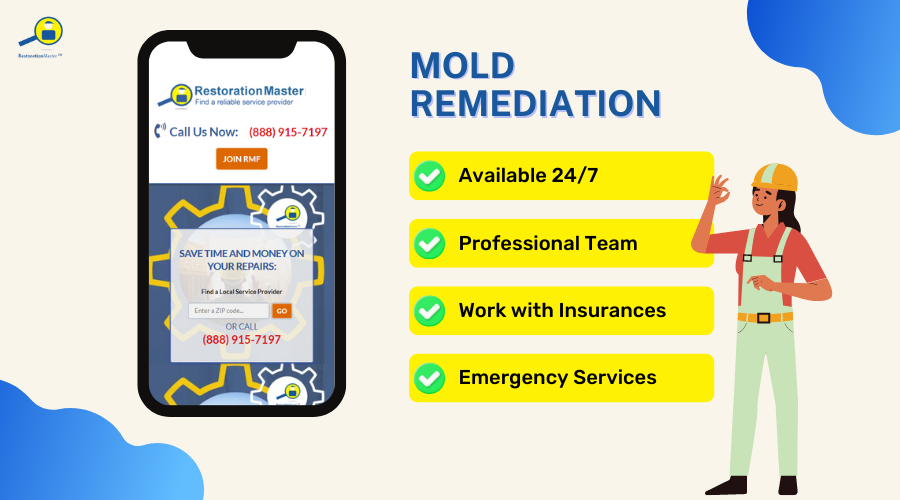
Run the dishwasher frequently, especially if air circulation is inadequate. Clean the dishwasher routinely and drain standing water left inside at the end of each cycle. Leave a cup of vinegar inside overnight to absorb any lingering moisture; or, run an empty rinse cycle with white distilled vinegar.
Avoid using a dishwasher that is infested with moldMold is a type of fungus that grows in damp or humid conditi... More. Instead, clean and sanitize the appliance or replace damaged parts. A mold-free dishwasher is safe to use. If moldMold is a type of fungus that grows in damp or humid conditi... More has invaded parts of your home, consult the water damage restoration professionals.
Water damage can cause moldMold is a type of fungus that grows in damp or humid conditi... More growth within 24 to 48 hours. When you face a moldMold is a type of fungus that grows in damp or humid conditi... More infestation, it’s critical to repair the water source first. Without moisture, moldMold is a type of fungus that grows in damp or humid conditi... More cannot survive. Professional technicians eliminate all excess moisture from your property with proven techniques and powerful equipment.
They dry the home or business completely with high-tech dryingDrying is the process of removing moisture from materials, s... More equipment set up throughout the area. Mold Specialists clean and disinfect the affected spaces to prevent further moldMold is a type of fungus that grows in damp or humid conditi... More colonies, bacteria, and microbial growth, then reinstall any water damaged items after they are dry.
Frequently Asked Questions
Q. Can moldMold is a type of fungus that grows in damp or humid conditi... More in dishwasher make you sick?
MoldMold is a type of fungus that grows in damp or humid conditi... More in the dishwasher can potentially make you sick. While most healthy individuals may not experience severe symptoms, moldMold is a type of fungus that grows in damp or humid conditi... More can cause various health issues, especially for those with allergies, asthma, or compromised immune systems. Common symptoms may include:
- Respiratory problems, such as coughing or wheezing
- Nasal congestion or sinus issues
- Skin irritation or rashes
- Eye irritation
If moldMold is a type of fungus that grows in damp or humid conditi... More sporesSpores are microscopic reproductive units of fungi or mold t... More contaminate dishes or utensils, they can be ingested, leading to further health concerns. To minimize risks, it’s essential to keep your dishwasher clean and free of moldMold is a type of fungus that grows in damp or humid conditi... More by regularly removing food particles and allowing the interior to dry out between uses.
Q. Does baking soda kill moldMold is a type of fungus that grows in damp or humid conditi... More?
Baking soda is effective at helping to remove moldMold is a type of fungus that grows in damp or humid conditi... More, but it doesn’t kill it outright. It acts as a natural abrasive and deodorizer, making it great for scrubbing away moldMold is a type of fungus that grows in damp or humid conditi... More and preventing its growth. When mixed with water, baking soda can help lift moldMold is a type of fungus that grows in damp or humid conditi... More from surfaces, making it easier to clean. For enhanced effectiveness, you can combine baking soda with vinegar.
Q. Is bleach safe to use in my dishwasher for moldMold is a type of fungus that grows in damp or humid conditi... More removal?
While bleach can be effective for moldMold is a type of fungus that grows in damp or humid conditi... More removal, it may damage rubber seals and other components in your dishwasher. It’s safer to use vinegar or specialized dishwasher cleaners.
Q. How often should I clean my dishwasher to prevent moldMold is a type of fungus that grows in damp or humid conditi... More?
It’s a good practice to clean your dishwasher at least twice a month, or more often if you notice any signs of moldMold is a type of fungus that grows in damp or humid conditi... More or unpleasant odors.










